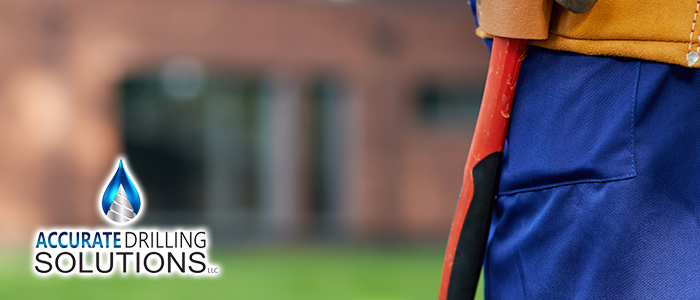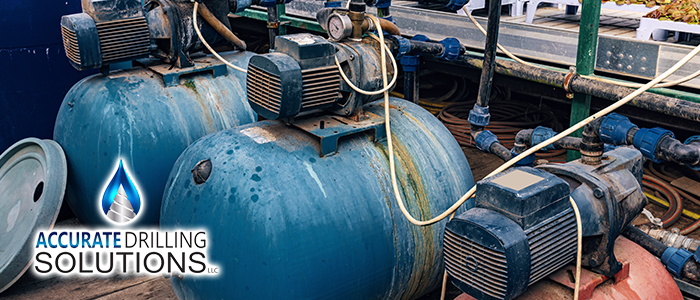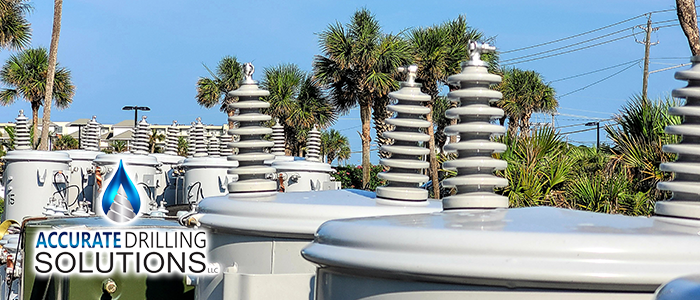
Well Maintenance Tips for Bartow Property Owners
For property owners in Bartow and neighboring areas like Lakeland who rely on private wells for their water supply, ensuring the system functions reliably and delivers safe water is paramount. Unlike municipal water systems, the responsibility for upkeep falls squarely on the well owner. Regular attention and preventative care can save significant expense and hassle down the road. Implementing consistent Well Maintenance Tips for Bartow property owners is key to protecting your investment and ensuring a continuous supply of clean water for your household.
Understanding Your Bartow Well System
Before diving into maintenance specifics, it helps to have a basic understanding of your well system’s components. Typically, a residential well system includes the well itself (the borehole, casing, and screen), a pump (usually submersible, located inside the well casing), a pressure tank (to store water and regulate pressure), a pressure switch (to turn the pump on and off), and the piping connecting it all to your home. Some systems may also incorporate water treatment devices (softeners, filters) depending on the water quality. Knowing these parts helps you identify potential issues and understand the importance of each maintenance step. The geology around Bartow can influence water characteristics, making local knowledge valuable when assessing system performance.
Familiarize yourself with the location of your wellhead, pressure tank, and main shut-off valve. Keep records of your well’s installation, including depth, yield, pump specifications, and any past maintenance or testing results. This information is invaluable for troubleshooting and when consulting with professionals like Accurate Drilling Solutions.
Regular Visual Inspections
One of the simplest yet most effective Well Maintenance Tips for Bartow residents is performing regular visual inspections of the accessible parts of your system. Make it a habit to check these areas every few months:
Start at the wellhead, the visible part of the well above ground. Ensure the well cap is securely in place, watertight, and free from cracks or damage. The cap prevents insects, debris, and surface water from entering the well. Check that the ground around the wellhead slopes away to divert rainwater and prevent pooling. Look for any exposed wiring and ensure it’s protected within conduit and properly sealed where it enters the cap. Inspect the area around the well for potential contamination sources like fuel tanks, septic systems, or areas where pesticides/herbicides are used – maintain proper separation distances as required by regulations. Check the visible piping, pressure tank, and pressure switch (often located in a basement, garage, or utility shed) for any signs of leaks, corrosion, or physical damage. Catching small leaks early can prevent water waste and more significant problems.
Importance of Water Quality Testing
You cannot tell if water is safe simply by looking at it, tasting it, or smelling it. Some harmful contaminants are undetectable by senses. Regular water testing is crucial for ensuring your well water is safe to drink and use. The frequency and types of tests depend on various factors, but some general guidelines apply.
The Centers for Disease Control and Prevention (CDC) recommends testing private wells annually for total coliform bacteria, nitrates, total dissolved solids, and pH levels. If you notice changes in taste, odor, or appearance, or if there have been nearby flooding or land disturbances, test more frequently. Consider testing for specific contaminants known to be issues in the Bartow or Lakeland area, such as arsenic, pesticides, or volatile organic compounds (VOCs), perhaps every 3-5 years or if specific industrial or agricultural activities are nearby. Families with infants or expecting mothers should be particularly diligent about nitrate testing, as high levels can cause “blue baby syndrome.” Keep records of all test results to track changes over time. Accurate Drilling Solutions can advise on appropriate testing schedules and help interpret results, recommending treatment options if necessary.
Caring for Your Well Pump
The well pump is the workhorse of your system, and while submersible pumps are generally reliable, they don’t last forever. Proper care and awareness can extend its life.
Listen for unusual noises coming from the pump or control box, such as clicking, grinding, or rapid cycling. These can indicate problems with the motor, bearings, or pressure switch. Pay attention to changes in water pressure or flow rate. A gradual decrease might suggest pump wear, clogging of the well screen, or a drop in the water table. Sudden changes often point to pump failure or electrical issues. Avoid rapid on/off cycling of the pump (short cycling), which can overheat the motor and shorten its lifespan. This is often caused by a malfunctioning pressure tank (waterlogged or incorrect air charge), leaks in the plumbing, or a faulty pressure switch. If you suspect pump problems, it’s best to call a professional service like Accurate Drilling Solutions. Attempting DIY repairs on submersible pumps can be complex and potentially hazardous due to the electrical components and the need to pull the pump from the well.
Pressure Tank Maintenance
The pressure tank plays a vital role in maintaining consistent water pressure and reducing pump wear. Simple maintenance can keep it functioning correctly.
Most modern pressure tanks use an internal bladder or diaphragm to separate air and water. Over time, the air pre-charge in the tank can decrease, leading to short cycling of the pump. Checking and adjusting the air pre-charge periodically (typically annually) is important. This procedure involves turning off power to the pump, draining the water pressure from the tank, and using a tire pressure gauge to check the air pressure at the valve on the tank. The correct pre-charge pressure is usually 2 PSI below the pump’s cut-in pressure setting (e.g., if your switch is 40/60 PSI, the pre-charge should be 38 PSI). Consult your tank’s manual or a professional if unsure. Also, inspect the tank exterior for rust or signs of leakage, which could indicate internal failure.
- Check Air Pre-charge Annually: Turn off pump power, drain water pressure, check air valve with gauge.
- Adjust Pre-charge: Add or release air to match 2 PSI below pump cut-in pressure.
- Inspect Tank Exterior: Look for rust, leaks, or physical damage.
- Listen for Short Cycling: Frequent pump starts/stops may indicate tank issues.
- Consult Manual/Professional: If unsure about procedure or settings.
Protecting Your Well from Contamination
Maintaining the physical integrity of your well and its surroundings is crucial for preventing contamination of your water supply. This is a key aspect of Well Maintenance Tips for Bartow residents.
Ensure the well cap is securely fastened and watertight. Repair or replace damaged caps immediately. Maintain the area around the wellhead, keeping it clear of debris, overgrown vegetation, and potential pollutants. Ensure the ground slopes away from the casing. Be mindful of activities near the well. Avoid mixing or using pesticides, fertilizers, herbicides, motor oil, or other hazardous chemicals nearby. Maintain proper distances between your well and septic systems (both yours and neighbors’), fuel tanks, and livestock areas, adhering to Polk County and state regulations. Never dispose of waste materials down or near the well. Be cautious after heavy rains or flooding, as these events can increase the risk of surface contaminants entering the well system. Consider additional water testing after such events.
Seasonal Considerations and Record Keeping
While Bartow’s climate is generally mild, certain seasonal factors and the importance of good records shouldn’t be overlooked.
During periods of heavy rain, pay extra attention to drainage around the wellhead. Ensure surface water flows away from the well. In times of drought, be mindful of water usage. Significantly lower water tables can strain pumps or even cause wells to run dry temporarily. If you notice sputtering faucets or decreased flow during dry spells, it could indicate water level issues. Keep a dedicated file for all well-related information. This includes the well driller’s report (log), pump installation details, maintenance records, water test results, and contact information for your well service provider (like Accurate Drilling Solutions). This history is incredibly useful for diagnosing problems and planning future maintenance or upgrades. Having detailed records can also be beneficial if you ever sell your property.
Information on well construction standards can often be found via resources like the National Ground Water Association (NGWA) website, which offers resources for private well owners.
When to Call a Professional
While regular visual checks and basic maintenance are helpful, many well system issues require professional expertise. Knowing when to call for help is important for safety and preventing further damage.
Contact a qualified well contractor like Accurate Drilling Solutions if you experience: no water or significantly reduced water pressure; cloudy, muddy, or colored water; unusual tastes or odors; persistent short cycling of the pump; loss of air pressure in the pressure tank; positive results for bacteria or other harmful contaminants in water tests; or if you suspect electrical problems with the pump or controls. Licensed professionals have the specialized tools, knowledge, and equipment to diagnose problems accurately, perform repairs safely (especially those involving pulling a submersible pump or dealing with electrical components), and ensure work complies with all regulations. They can also perform more complex maintenance like well cleaning or rehabilitation if needed.
Conclusion: Proactive Care for Your Water Source
Maintaining your private well system is an ongoing responsibility that pays dividends in reliable service and safe drinking water. By implementing these Well Maintenance Tips for Bartow property owners – including regular visual inspections, routine water testing, pump and pressure tank care, and protecting the wellhead area – you can significantly extend the life of your system and safeguard your family’s health. Remember that proactive maintenance is always more cost-effective than emergency repairs.
For comprehensive well system services, including professional inspections, maintenance, repairs, water testing assistance, and water treatment solutions in the Bartow and Lakeland areas, rely on the expertise of Accurate Drilling Solutions. Visit https://accurate4.com to learn more and schedule service.
continue reading
Related Posts
Dade City Commercial Water Solutions: A Complete Guide For businesses
North Port: Understanding Your Well System Options For homeowners and
Palmetto Business Owners’ Guide to Well System Efficiency For businesses





